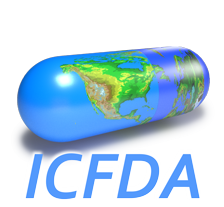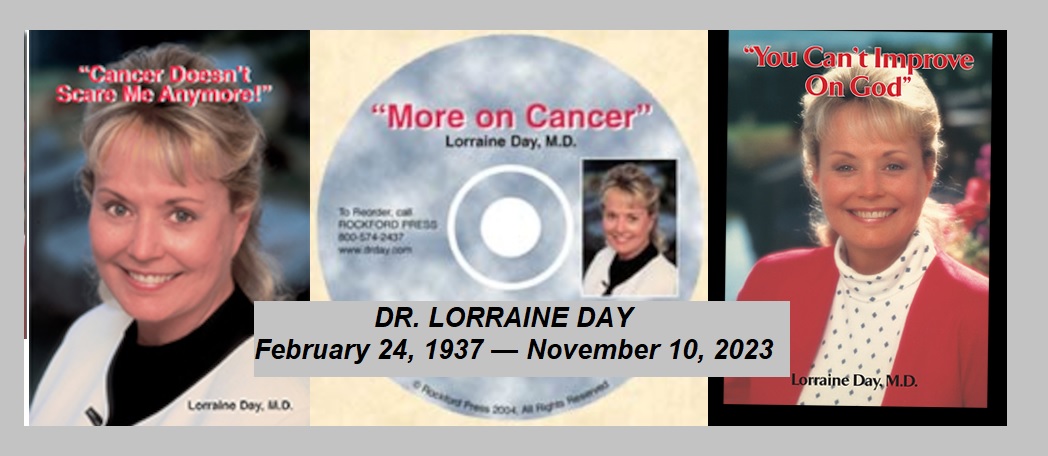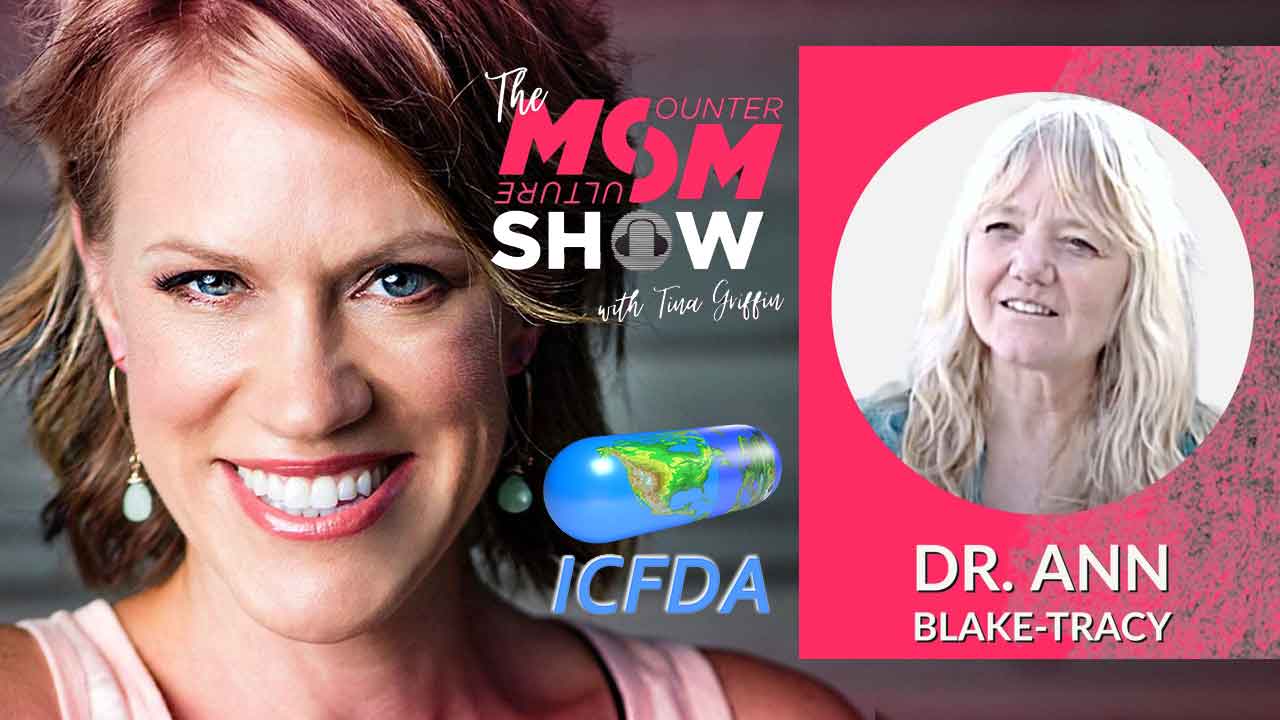Please excuse the flood of new information. I have
been on the road lecturing for the last six months or
so and have several e-mails that have been waiting
for me to send them out to you.
Keep in mind as you read this article that the SSRI
antidepressants were among the first to be approved
after the expidited drug approvals began. If anyone
thinks these seven drugs have been deadly(and they
have taken a terrible toll while bringing in billions for
the drug companies), just wait until the death toll
comes in on the SSRIs!
Ann Blake-Tracy, Executive Director,
International Coalition For Drug Awareness
www.drugawareness.org
_______________________________________
FDA’s Expedited Drug Approvals Cost Lives
“They’ve lost their compass and they forget who it is that they are
ultimately serving,” said Lemuel Moye, a University of Texas School of Public
Health physician who served from 1995 to 1999 on an FDA advisory committee.
“Unfortu- nately the public pays for this, because the public believes that
the FDA is watching the door, that they are the sentry.”
Friday, December 29, 2000
BY DAVID WILLMAN
LOS ANGELES TIMES
WASHINGTON — For most of its history, the U.S. Food and Drug
Administration approved new prescription medicines at a grudging pace, paying
daily homage to the physician’s creed, “First, do no harm.”
Then in the early 1990s, the demand for AIDS drugs changed the political
climate. Congress told the FDA to work closely with pharmaceutical companies
in getting new medicines to market more swiftly. President Clinton urged FDA
leaders to trust industry as “partners, not adversaries.”
The FDA achieved its new goals, but now the human cost is becoming clear.
Seven drugs approved since 1993 have been withdrawn after reports of
deaths and severe side effects. A two-year Los Angeles Times investigation
has found that the FDA approved each of those drugs while disregarding danger
signs or blunt warnings from its own specialists. Then, after receiving
reports of significant harm to patients, the agency was slow to seek
withdrawals.
According to “adverse-event” reports filed with the FDA, the seven drugs
were cited as suspects in 1,002 deaths. Because the deaths are reported by
doctors, hospitals and others on a voluntary basis, the true number of
fatalities could be far higher, according to epidemiologists.
An adverse-event report does not prove that a drug caused a death; other
factors, such as pre-existing disease, could play a role. But the reports are
regarded by public health officials as the most reliable early warnings of
danger.
The FDA’s performance was tracked through an examination of thousands of
pages of government documents, other data obtained under the Freedom of
Information Act and interviews with more than 60 present and former agency
officials.
Not Needed to Save Lives: The seven drugs were not needed to save lives.
One was for heartburn. Another was a diet pill. A third was a painkiller. All
told, six of the medicines were never proven to offer lifesaving benefits,
and the seventh, an antibiotic, was ultimately judged unnecessary because
other, safer antibiotics were available.
The seven are among hundreds of new drugs approved since 1993, a period
during which the FDA has become known more for its speed than its caution. In
1988, only 4 percent of new drugs introduced into the world market were
approved first by the FDA. In 1998, the FDA’s first-in-the-world approvals
spiked to 66 percent.
The drug companies’ batting average in getting new drugs approved also
climbed. By the end of the 1990s, the FDA was approving more than 80 percent
of the industry’s applications for new products, compared with about 60
percent at the beginning of the decade.
And the companies have prospered: The seven unsuccessful drugs alone
generated U.S. sales exceeding $5 billion before they were withdrawn.
Once the world’s unrivaled safety leader, the FDA was the last to
withdraw several new drugs in the late 1990s that were banned by health
authorities in Europe.
“This track record is totally unacceptable,” said Curt Furberg, a
professor of public health sciences at Wake Forest University. “The patients
are the ones paying the price. They’re the ones developing all the side
effects, fatal and non-fatal. Someone has to speak up for them.”
Fatal Missteps: The FDA’s faster and more lenient approach helped supply
pharmacy shelves with scores of new remedies. But it has also yielded these
fatal missteps, according to the documents and interviews:
— Only 10 months ago, FDA administrators dismissed one of its medical
officer’s emphatic warnings and approved Lotronex, a drug for treating
irritable bowel syndrome. Lotronex has been linked to five deaths, the
removal of a patient’s colon and other bowel surgeries. It was pulled off the
market Nov. 28.
— The diet pill Redux, approved in April 1996 despite an advisory
committee’s vote against it, was withdrawn in September 1997 after
heart-valve damage was detected in patients put on the drug. The FDA later
received reports identifying Redux as a suspect in 123 deaths.
— The antibiotic Raxar was approved in November 1997 in the face of
evidence that it may have caused several fatal heart-rhythm disruptions in
clinical studies. FDA officials chose to exclude any mention of the deaths
from the drug’s label. The maker of the pill withdrew it in October 1999.
Raxar was cited as a suspect in the deaths of 13 patients.
— The blood pressure medication Posicor was approved in June 1997
despite findings by FDA specialists that it might fatally disrupt heart
rhythm and interact with certain other drugs, posing potentially severe risk.
Posicor was withdrawn one year later; reports cited it as a suspect in 100
deaths.
— The painkiller Duract was approved in July 1997 after FDA medical
officers warned repeatedly of the drug’s liver toxicity. Senior officials
sided with the manufacturer in softening the label’s warning of the liver
threat. The drug was withdrawn 11 months later. By late 1998, the FDA had
received voluntary reports citing Duract as a suspect in 68 deaths, including
17 that involved liver failure.
— The diabetes drug Rezulin was approved in January 1997 over a medical
officer’s detailed opposition and was withdrawn last March after the agency
had linked 91 liver failures to the pill. Reports cite Rezulin as a suspect
in 391 deaths.
— The nighttime heartburn drug Propulsid was approved in 1993 despite
evidence that it caused heart-rhythm disorders. The officials who approved
the drug failed to consult the agency’s own cardiac specialists about the
signs of danger. The drug was taken out of pharmacies in July after scores of
confirmed heart-rhythm deaths. Overall, Propulsid has been cited as a suspect
in 302 deaths.
The FDA’s handling of Propulsid put children at risk.
The agency never warned doctors not to administer the drug to infants or
other children even though eight youngsters given Propulsid in clinical
studies had died. Pediatricians prescribed it widely for infants afflicted
with gastric reflux, a common digestive disorder.
Parents and their doctors had no way of knowing that the FDA, in August
1996, had found Propulsid to be “not approvable” for children.
By the time the drug was pulled, the FDA had received reports of 24 deaths
of children under age 6 who were given Propulsid. By then the drug had
generated U.S. sales of $2.5 billion for Johnson & Johnson Co.
Questions also surround the recent approvals of other compounds that
remain on the market, including a new flu drug called Relenza. In February
1999, an FDA advisory committee concluded that Relenza had not been proven
safe and effective. The agency nevertheless approved it. After the deaths of
seven patients, the FDA last January issued a “public health advisory” to
doctors.
A total of 10 drugs have been pulled from the market in just the past
three years for safety reasons, including three pills that were approved
before the shift that took hold in 1993. Never before has the FDA overseen
the withdrawals of so many drugs in such a short time. More than 22 million
Americans — about 10 percent of the nation’s adult population — took those
drugs.
With many of the drugs, the FDA used tiny-print warnings or
recommendations in package labeling as a way to justify approvals or stave
off withdrawals. In other instances, the agency has withheld safety
information from labels that physicians say would call into question the use
of the product.
Lost Compass? Present and former FDA specialists said the regulatory
decisions of senior officials have clashed with the agency’s central
obligation, under law, to “protect the public health by ensuring . . . that
drugs are safe and effective.”
“They’ve lost their compass and they forget who it is that they are
ultimately serving,” said Lemuel Moye, a University of Texas School of Public
Health physician who served from 1995 to 1999 on an FDA advisory committee.
“Unfortu- nately the public pays for this, because the public believes that
the FDA is watching the door, that they are the sentry.”
The FDA’s shift is felt directly in the private practice of medicine,
said William Isley, a Kansas City, Mo., physician specializing in diabetes.
He implored the agency to reassess Rezulin three years ago after a patient he
treated suffered liver failure taking the pill.
“FDA used to serve a purpose,” Isley said. “A doctor could feel sure that
a drug he was prescribing was as safe as possible. Now you wonder what kind
of evaluation has been done, and what’s been swept under the rug.”
Withdrawals’ Consequences: FDA officials said they have tried
conscientiously to weigh benefits vs. risks in deciding whether to approve
new drugs. They noted that many doctors and patients complain when a drug is
withdrawn.
“All drugs have risks; most of them have serious risks,” said Janet
Woodcock, director of the FDA’s drug-review center. She added that some of
the withdrawn drugs were “very valuable, even if not lifesaving, and their
removal from the market represents a loss, even if a necessary one.”
Once a drug is proven effective and safe, Woodcock said, the FDA depends
on doctors “to take into account the risks, to read the label. . . . We have
to rely on the practitioner community to be the learned intermediary. That’s
why drugs are prescription drugs.”
In a May 12, 1999, article co-authored with FDA colleagues and published
by the Journal of the American Medical Association, Woodcock said, “The FDA
and the community are willing to take greater safety risks due to the serious
nature of the [illnesses] being treated.”
Compared to the volume of new drugs approved, they wrote, the number of
recent withdrawals “is particularly reassuring.”
However, agency specialists point out that both approvals and withdrawals
are controlled by Woodcock and her administrators. When they consider a
withdrawal, they face the unpleasant prospect of repudiating their original
decision to approve.
Woodcock, 52, received her medical degree at Northwestern University and
is a board-certified internist. She alluded in a recent interview to the
difficulty she feels in rejecting a proposed drug that might cost a company
$150 million or more to develop. She also acknowledged the commercial
pressures in a March 1997 article.
But last summer — following the eighth and ninth drug withdrawals —
Woodcock said the FDA cannot rely on labeling precautions, alone, to resolve
safety concerns.
“As medical practice has changed . . . it’s just much more difficult for
[doctors] to manage” the expanded drug supply, Woodcock said in an interview.
Yet the imperative to move swiftly, cooperatively, remains.
“We are now making decisions more quickly and more predictably while
maintaining the same high standards for product safety and efficacy,” FDA
Commissioner Jane Henney said in a National Press Club speech on Dec. 12.
The Role of AIDS: The impetus for change at the FDA emerged in 1988, when
AIDS activists paralyzed operations for a day at the agency’s 18-story
headquarters in Rockville, Md. They demanded immediate approval of
experimental drugs that offered at least a ray of hope to those otherwise
facing death.
The FDA often was taking more than two years to review new drug
applications. The pharmaceutical industry saw a chance to loosen the
regulatory brakes and expedite an array of new products to market. The
companies and their Capitol Hill lobbyists pressed for advantage: If
unshackled, they said, the companies could invent and develop more remedies
faster.
The political pressure mounted, and the FDA began to bow. By 1991, agency
officials told Congress they were making significant progress in speeding the
approval process.
The emboldened companies pushed for more. They proposed that drugs
intended for either life-threatening or “serious” disorders receive a quicker
review.
“The pharmaceutical companies came back and lobbied the agency and the
Hill for that word, ‘serious,’ ” recalled Jeffrey Nesbit, who in 1991 was
chief of staff to FDA Commissioner David Kessler.
In 1992, Kessler issued regulations giving the FDA discretion to
“accelerate approval of certain new drugs” for serious or life-threatening
conditions. That same year a Democrat-controlled Congress approved and
then-President Bush signed the Prescription Drug User Fee Act. It established
goals that call for the FDA to review drugs within six months or a year; the
pharmaceutical companies pay a user fee to the FDA, now $309,647, with the
filing of each new drug application.
Reinventing Government: The newly elected Clinton administration climbed
aboard with its “reinventing government” project. Headed by Vice President Al
Gore, the project called for the FDA, by January 2000, to reduce “by an
average of one year the time required to bring important new drugs to the
American public.” As Clinton put it in a speech on March 16, 1995, the
objective was to “get rid of yesterday’s government.”
For the FDA’s medical reviewers — the physicians, pharmacologists,
chemists and biostatisticians who scrutinize the safety and effectiveness of
emerging drugs — a new order had taken hold.
The reviewers work out of public view in secure office buildings
clustered along Maryland’s Route 355. They examine truckloads of scientific
documents. They are well-educated; some are highly motivated to do their best
for a nation of patients who unknowingly count on their expertise.
One of these reviewers was Michael Elashoff, a biostatistician who
arrived at the FDA in 1995 after earning degrees from the University of
California, Berkeley, and the Harvard School of Public Health.
“From the first drug I reviewed, I really got the sense that I was doing
something worthwhile. I saw what a difference a single reviewer can make,”
said Elashoff, the son and grandson of statisticians.
Last year he was assigned to review Relenza, the new flu drug developed
by Glaxo Wellcome. He recommended against approval, citing a lack of proven
effectiveness and potential risks.
An agency advisory committee agreed and on Feb. 24 voted 13-4 against
approving Relenza.
After the vote, senior FDA officials upbraided Elashoff. They stripped
him of his review of another flu drug. They told him he would no longer make
presentations to the advisory committee. And they approved Relenza as a safe
and effective flu drug.
Elashoff and other FDA reviewers discern a powerful message.
“People are aware that turning something down is going to cause problems
with [officials] higher up in FDA, maybe more problems than it’s worth,” he
said.
Elashoff left the FDA four months ago.
In 1994, the FDA’s goal was to finish 55 percent of its new drug reviews
on time; the agency achieved 95 percent. In both 1997 and 1998, the goal was
90 percent and the FDA achieved 100 percent.
From 1993-99 the agency approved 232 drugs regarded as “new molecular
entities,” compared with 163 during the previous seven years, a 42 percent
increase.
The time-limit goals quickly were treated as deadlines within the FDA —
imposing relentless pressure on reviewers and their bosses to quickly
conclude their work and approve the drugs.
“The goals were to be taken seriously. I don’t think anybody expected the
agency to make them all,” said William Schultz, a deputy FDA commissioner
from 1995 to 1999.
Schultz, who helped craft the 1992 user-fee act as a congressional staff
lawyer, added: “You can meet the goal by either approving the drug or denying
the approval. But there are some who argue that what Congress really wanted
was not just decisions, but approvals. That is what really gets dangerous.”
The user fees have enabled the FDA to hire more medical reviewers. Last
year, 236 medical officers examined new drugs compared with 162 officers on
duty in 1992, the year before the user fees took effect.
‘A Sweatshop Environment’: Even so, Woodcock acknowledged in an FDA
publication last fall that the workloads and tight performance goals “create
a sweatshop environment that’s causing high staffing turnover.”
Dozens of officials interviewed by the Times made similar observations.
The perception of coziness with drug makers is perpetuated by potential
conflicts of interest within the FDA’s 18 advisory committees, the
influential panels that recommend which drugs deserve approval or should
remain on the market. The FDA allows some appointees to double as consultants
or researchers for the same companies whose products they are evaluating on
the public’s behalf. Such was the case during committee appraisals of several
of the recently withdrawn drugs, including Lotronex and Posicor, the Times
found.
Few doubt the $100 billion pharmaceutical industry’s clout. Over the last
decade, the drug companies have steered $44 million in contributions to the
major political parties and to candidates for the White House and both houses
of Congress.
The FDA reviewers said they and their bosses fear that unless the new
drugs are approved, companies will erupt and Congress will retaliate by
refusing to renew the user fees. This would cripple FDA operations — and
jeopardize jobs.
Yet even if the user fees remain, the FDA is prohibited from spending the
revenue for anything other than reviewing new drugs. So while the budget for
pre-approval reviews has soared, the agency has gotten no similar increase of
resources to evaluate the safety of the drugs after they are prescribed.
Leading industry officials say Americans have nothing to fear from the
wave of drug approvals.
“Do unsafe drugs enter and remain in the marketplace? Absolutely not,”
said Bert Spilker, senior vice president for scientific and regulatory
affairs for the Pharmaceutical Research and Manufacturers of America, in
remarks last year to industry and FDA scientists.
But during interviews over the last two years, current and former FDA
specialists cited repeated instances when drugs were approved with less than
compelling evidence of safety or effectiveness. They also said that important
information has been excluded from the labels on some medications.
Salt Lake Tribune, December 29, 2000, pg. A10




I am trying to get in touch with David Willman.
I am trying to get copies of his research on the drug propuslid.